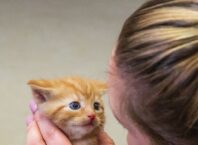The artist Sarah Biffin (1784-1850) came from humble origins yet rose to fame in the 19th-century as a remarkably talented miniaturist, undertaking commissions for royalty.
As a working-class, disabled female artist, her artwork – many proudly signed “without hands” – is a testament to her talent and life-long determination.
But despite her prolific artistic output and appearance in numerous published memoirs, letters and literary works by leading figures of her age, Sarah Biffin’s remarkable life has been largely overlooked by art historians. Until now. A new exhibition at Philip Mould & Company – the first to focus on Sarah in a century – hopes to rectify this.
With advisor, artist Alison Lapper MBE (born 180 years later with the same condition), consultant and contributor, Professor Essaka Joshua (specialist in Disability Studies at the University of Notre Dame, Indiana) and loans from national institutions and private collections, Without Hands will celebrate Biffin as a disabled artist who challenged contemporary attitudes to disability.
Sarah Biffin was born in Somerset in 1784 with the condition ‘phocomelia’, described on her baptism record as ‘born without arms and legs’. She spent her childhood in her family home where she learnt to sew and write. As a teenager, Biffin was contracted to Emmanuel Dukes who ran a travelling sideshow, where she was described as the ‘Eighth Wonder’. Exhibiting at town and country fairs, Biffin would write and paint and cut out and sew clothes. The crowds who turned up left with a sample of her writing included in the cost of their ticket.
In her mid-twenties she began formal tuition with a miniature painter, William Marshall Craig and from 1816 she set herself up as an independent artist, travelling the length and breadth of the UK, before finally settling in Liverpool. Throughout her long and successful career – she lived until the age of 66 – she took commissions from nobility and royalty (notably portraying William II King of Holland, when Prince of Orange) and recorded her own likeness across the years through exquisitely detailed self-portraits.
Following the story of her life, Without Hands will include around 25 works that showcase Biffin’s artistic achievements. The exhibition will include a series of self-portraits, commissioned portraits (such as Portrait miniature of Thomas Lamb and Portrait miniature of Anna Eliza Rausch), highly skilled still-lifes (including the delicate and detailed 1812 Study of Feathers), posters from Dukes’ travelling show declaring her ‘The Greatest Wonder in the World’, samples of her writing, small watercolours bought by the curious public (Forget Me Not, 1847) and several letters written by Biffin and signed “written by Sarah Biffin without hands”.
Somerset Museums are lending a watercolour Sarah Biffin’s visit to Bury Fair, Bury St. Edmunds in 1810, which offers insight into how the public of the time responded to Biffin.
Biffin created self-portraits throughout her life and four are included in the show, including Self-Portrait before her painting slope (c.1825) acquired by the National Portrait Gallery in 2020, which will feature in Inspiring People when the gallery reopens in 2023. In all of them she is dressed fashionably – a model of respectability – complete with an elaborate hat.
Juxtaposed in this section of the exhibition will be a self-portrait by Alison Lapper, which she is lending to the show along with a photograph of herself by Rankin.
Four handwritten letters will allow visitors the opportunity to hear Biffin’s voice, experience her sense of humour and get a unique insight into her life. In one letter she writes ahead to a lodging in London where she is planning to stay and requests accommodation for two people. She ends with the postscript, ‘The beds must not be both in the same room’.
The exhibition will be accompanied by the first ever publication devoted to Sarah Biffin.
Our advisor, artist Alison Lapper MBE (born 180 years later with the same condition), has noted a number of comparisons between her experience as a disabled female artist, and that of Sarah Biffin’s; “I am completely fascinated with Sarah Biffin and our similarities.”
Emma Rutherford, portrait miniatures consultant at Philip Mould & Company: “Sarah Biffin came to my attention in 1999, when I was asked to contribute to a television programme on her. I found her story utterly remarkable and have been fascinated by her ever since. It seems as though the art world is only just waking up to her achievements, so the opportunity to curate an exhibition feels incredibly timely and exciting.”
Philip Mould says “Biffin’s life and achievements came as an increasing surprise to me the more we discovered. She not only transcended her challenges but held her own in a crowded marketplace – ranking, amongst others, Queen Victoria as her patron. She was prolific in her day, I’m confident that more of her works will turn up – so inspirational was her life I also feel sure there will be books and films to follow.”




